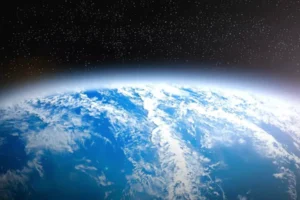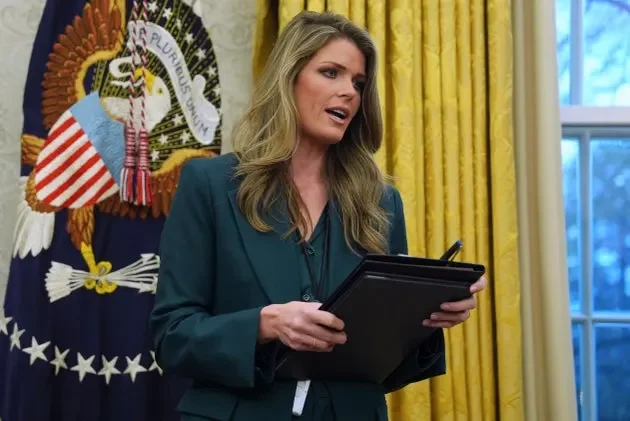A new 28-point peace framework drafted by the United States and Russia has been presented to Ukraine, outlining a controversial path to ending the ongoing conflict. The proposal includes several long-standing demands from Moscow—concessions Ukraine has consistently rejected—and aims to push both sides toward a ceasefire.
According to officials, Ukrainian President Volodymyr Zelensky has agreed to continue discussions on the draft, even though the plan reflects many of Russian President Vladimir Putin’s core wartime objectives. Zelensky said he plans to consult US President Donald Trump soon to further examine the diplomatic possibilities and essential conditions needed to reach a “just peace.”
Ukraine confirmed receiving the draft from Washington following a meeting with senior US military officials in Kyiv. Zelensky’s office stated that Ukraine outlined key principles that must be preserved, and both sides agreed to continue refining the provisions in pursuit of an acceptable settlement.
Overview of the Peace Proposal
The US-Russia 28-point outline mirrors elements of the Gaza ceasefire model and aims to end the full-scale Russian invasion now entering its fourth year. At its core, the draft suggests recognising several occupied Ukrainian territories as de facto Russian and includes military limitations, political reforms, and security commitments from the United States.
Key conditions include accepting Russian control over Crimea, Luhansk and Donetsk, restricting the size of Ukraine’s military, ruling out future NATO membership, and gradually lifting Western sanctions on Russia. In return, Ukraine would receive a US-led security guarantee and significant reconstruction support funded partly through frozen Russian assets.
Breakdown of the 28 Provisions
1. Ukraine’s territorial integrity and sovereignty would be formally acknowledged.
2. Russia, Ukraine, and European nations would sign a comprehensive non-aggression pact, ending decades of geopolitical ambiguity.
3. Russia would commit to not invading neighbouring countries, while NATO would halt further expansion.
4. The United States would facilitate dialogue between NATO and Russia to resolve security disputes, reduce tension, and support future economic collaboration.
5. Ukraine would receive explicit US security guarantees—introduced for the first time in official discussions, though the details remain unspecified.
6. Ukraine’s armed forces would be capped at 600,000 personnel, down from the current estimated 800,000–850,000.
7. Ukraine would amend its constitution to permanently forswear NATO membership, and NATO would add a pledge never to admit Ukraine.
8. NATO would agree not to deploy troops on Ukrainian soil—effectively blocking European proposals to position military personnel in Ukraine after the war.
9. European jet fighters would be stationed in Poland rather than Ukraine.
10. The US would be compensated for its security guarantees. Ukraine would lose this protection if it attacks Russia without cause. If Russia attacks Ukraine, all sanctions would be reinstated, and territorial recognitions revoked.
11. Ukraine would be eligible for EU membership and receive temporary preferential access to European markets.
12. A large-scale reconstruction program would be launched, including a Ukraine Development Fund focusing on tech, AI, and energy infrastructure jointly operated with the United States.
13. Russia would be gradually reintegrated into the global economy. Sanctions would be lifted in phases, and the US and Russia would pursue long-term economic partnerships in energy, AI, Arctic resources, and more—including Russia’s potential return to the G8.
14. $100 billion in frozen Russian assets would be invested in rebuilding Ukraine, with the US receiving half the profits. Europe would contribute an additional $100 billion. Remaining frozen funds would go toward a joint US-Russia investment mechanism.
15. A joint US-Russia security task force would monitor compliance and implementation of the agreement.
16. Russia would formally legislate a non-aggression policy toward Ukraine and Europe.
17. Washington and Moscow would renew and extend key nuclear arms control agreements, including the expiring New START treaty.
18. Ukraine would remain a non-nuclear state under the Nuclear Non-Proliferation Treaty.
19. The Zaporizhzhia Nuclear Power Plant would resume operation under IAEA oversight, with electricity shared equally between both nations.
20. Education systems in both countries would adopt programmes aimed at promoting tolerance, reducing discrimination, and protecting linguistic and religious minorities.
21. The United States would recognise Crimea, Luhansk, and Donetsk as de facto Russian. Parts of Kherson and Zaporizhzhia would remain frozen along current lines of control. Ukrainian troops would withdraw from areas of Donetsk they still hold, creating a demilitarised buffer zone under international recognition.
22. Both countries would pledge not to alter the agreed territorial arrangements through military force. Security guarantees would be void if either party violates this condition.
23. Russia would allow Ukraine free commercial navigation on the Dnieper River and support new grain export agreements through the Black Sea.
24. A humanitarian committee would be created to manage prisoner exchanges, hostage returns, body repatriation, and family reunification.
25. Ukraine would hold national elections within 100 days of the agreement.
26. All individuals and entities involved in wartime actions would receive full amnesty, and no future legal claims or investigations would be pursued.
27. The agreement would be legally binding and supervised by a Peace Council chaired by President Donald J. Trump. Violations would result in sanctions.
28. Once ratified by all parties, an immediate ceasefire would commence as soon as both sides withdraw to the designated positions outlined in the agreement.










